

Mitchell Lane PUBLISHERS
Copyright 2008 by Mitchell Lane Publishers. All rights reserved. No part of this book may be reproduced without written permission from the publisher. Printed and bound in the United States of America.
Printing 2 3 4 5 6 7 8 9
A Robbie Reader/Natural Disasters
The Ancient Mystery of Easter Island
The Bermuda Triangle Bubonic Plague
Earthquake in Loma Prieta, California, 1989
The Fury of Hurricane Andrew, 1992
Hurricane Katrina, 2005
The Influenza Pandemic of 1918
The Johnstown Flood, 1889
The Lost Continent of Atlantis
Mt. Vesuvius and the Destruction of Pompeii, A.D. 79
Mudslide in La Conchita, California, 2005
Tornado Outbreak, 1985
Tsunami Disaster in Indonesia, 2004
The Volcanic Eruption on Santorini, 1650 BCE
Where Did All the Dinosaurs Go?
Library of Congress Cataloging-in-Publication Data
ONeal, Claire.
The influenza pandemic of 1918 / by Claire ONeal.
p. cm. (A Robbie reader)
Includes bibliographical references and index.
ISBN 978-1-58415-569-0 (library bound)
eISBN-13: 978-1-54574-956-2
1. Influenza Epidemic, 1918-1919Juvenile literature. I. Title.
RC150.4.O54 2008
614.51809041 dc22
2007000821
ABOUT THE AUTHOR: Claire ONeal is a writer-turned-scientist-turned-writer. A lifelong love of reading and writing led her to study medieval literature. But upon taking a biology course in college, she was inspired to completely switch gears and study the biochemistry of disease. Her scientific research on cholera has been published in prominent journals. She lives in Delaware with her husband, their two young sons, and a fat black cat.
PHOTO CREDITS: Cover, p. 8 Hulton Archive/Getty Images; pp. 1, 4 Stringer/Time Life Pictures/Getty Images; p. 20 Underwood And Underwood/Time & Life Pictures/ Getty Images; p. 6 Otis Historical Archives/National Museum of Health & Medicine; pp. 11, 12 Photo Researchers, Inc; p. 14 United Kingdon Government; p. 15 National Museum of Health & Medicine; pp. 17, 21Library of Congress; p. 23 Naval Historical Center; p. 24 (top)World Health Organization ; pp. 24 (bottom), 26 JupiterImages.
PUBLISHERS NOTE: The following story has been thoroughly researched and to the best of our knowledge represents a true story. While every possible effort has been made to ensure accuracy, the publisher will not assume liability for damages caused by inaccuracies in the data, and makes no warranty on the accuracy of the information contained herein.
PLB
TABLE OF CONTENTS
Chapter One
The Cook and the Crowded Camp
Chapter Two
What Caused the Spanish Flu?
Chapter Three
War Spreads the Spanish Flu
Chapter Four
The Flu and the American Public
Chapter Five
Can It Happen Again?
Words in bold type can be found in the glossary.
 CHAPTER ONE
CHAPTER ONE
The Cook and the Crowded Camp
Albert Gitchell woke up early on March 11, 1918. He was a company cook at Fort Riley, in Kansas. It was his job to get up before dawn every day and make breakfast for the soldiers at the military base.
The base hadnt always been so busy. Only a few months before, thousands of young soldiers had poured into Fort Riley. The United States was in a hurry to send troops to Europe to help France, Great Britain, and the Allied (AL-eyed) Powers in the Great War, which would come to be called World War I. But Fort Riley was not ready to house so many people. It had no heat, hot water, or even toilets. These conditions often made the men sick, especially through the harsh winters.

At the height of the epidemic in the fall of 1918, emergency hospitals like this one in Fort Riley were filled with victims of the Spanish flu.
This morning, Albert would not be cooking. He had a high fever and a sore throat, and his body hurt all over. He knew he was sick enough that he should go straight to the forts hospital.
The doctors there told Albert he had influenza (in-floo-EN-zuh), or the flu, and sent him to the contagious (kon-TAY-jus) disease ward. They knew that Alberts influenza was dangerous in a crowded place like Fort Riley, that it could easily spread and infect lots of people.
What they didnt know was that it already had.
By lunchtime, 107 soldiers had been admitted to the hospital with the same symptoms (SIMP-tums). Within two days, 522 people at Fort Riley were sick with the flu. By the end of the year, Albert Gitchells flu had caused a pandemic (pan-DEH-mik), or a sickness that affects countries around the globe. The influenza pandemic of 1918, which became known as the Spanish flu, made half of the worlds population sick and killed over 50 million people. In six months, it had claimed twice as many lives as the Great War, which lasted over four years.
 CHAPTER TWO
CHAPTER TWO
What Caused the Spanish Flu?
In the spring and fall of 1918, thousands of patients arrived at hospitals every day, all over the world, with the same symptoms. They had fevers and body aches and were often too weak to walk. As their flu worsened, they could catch secondary infections like pneumonia (noo-MOH-nyuh). Flu and pneumonia were a deadly combination. Pneumonia caused flu victims to cough up blood. Their skin would turn blue because their lungs couldnt get enough air. If they didnt die quickly, patients could slowly drown as their lungs filled with their own blood and fluids.
Doctors in 1918 were not strangers to the flu. The seasonal flu came every year, usually in the winter, and made a few people sick. But the Spanish flu was not like the seasonal flu. The seasonal flu rarely kills. It is most dangerous to babies and the elderly. In contrast, most victims of the Spanish flu were healthy men and women aged 20 to 40. Also, whereas the seasonal flu typically hits the hardest in winter, the Spanish flu struck in two waves in 1918, in the spring and then again in the early fall.
At the time, many doctors thought the Spanish flu was caused by bacteria (bak-TEER-ee-uh). Today we know that influenza is caused by a virus (VY-rus). Viruses infect living cells , such as those that make up the human body. Viruses are very small, too small to be seen without high-powered microscopes (MY-kroh-skohps). There are many kinds of viruses that make people sick. Other viruses can infect animals, plants, and tiny bacteria.
Even today, if you get sick with a virus, there arent many medicines available to help your body fight the infection. The best weapon people have against viruses are immunizations (im-yoo-nih-ZAY-shuns), or shots. Immunizations introduce the body to pieces of the virus before an infection occurs. If the real virus ever infects someone who has been immunized, that persons immune system recognizes and destroys the virus before he or she can get sick.

Influenza viruses (yellow spheres) invade a human cell. Once the virus enters a cell, usually in the nose, throat, or lungs, the virus takes control of the cells command center, the nucleus (upper right, red). The cell then becomes a virus-producing machine until it dies. The viruses leave the dead cell to infect others.
Next page
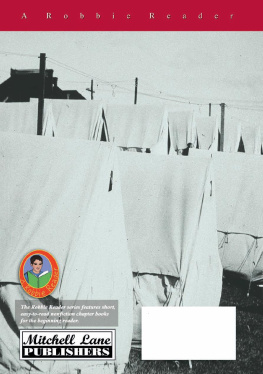
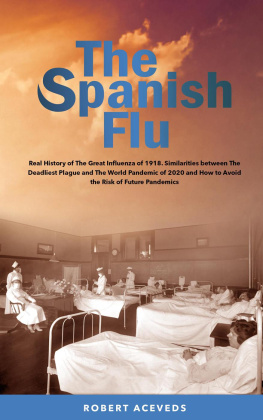
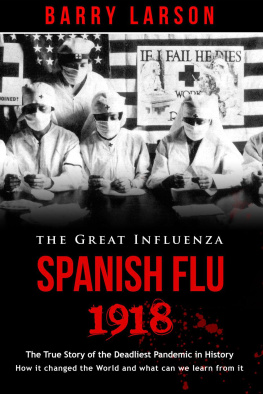
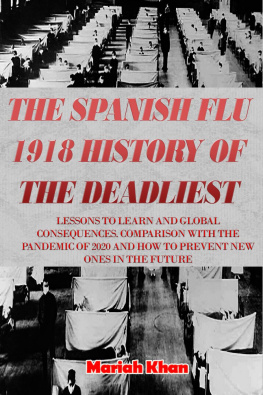
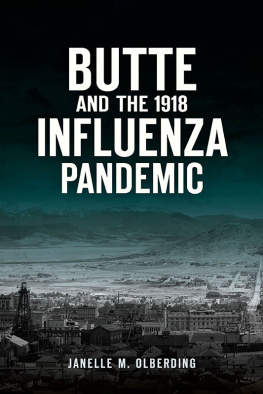
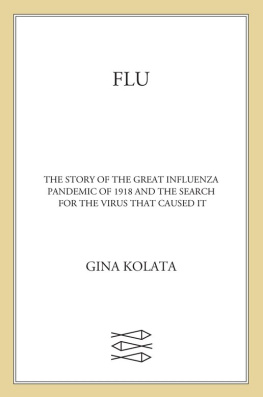

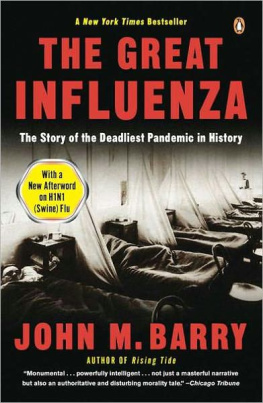

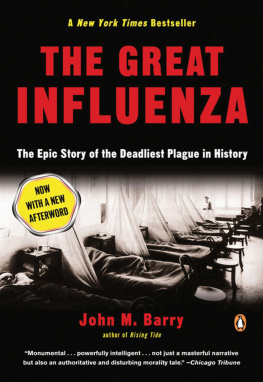


 CHAPTER ONE
CHAPTER ONE
